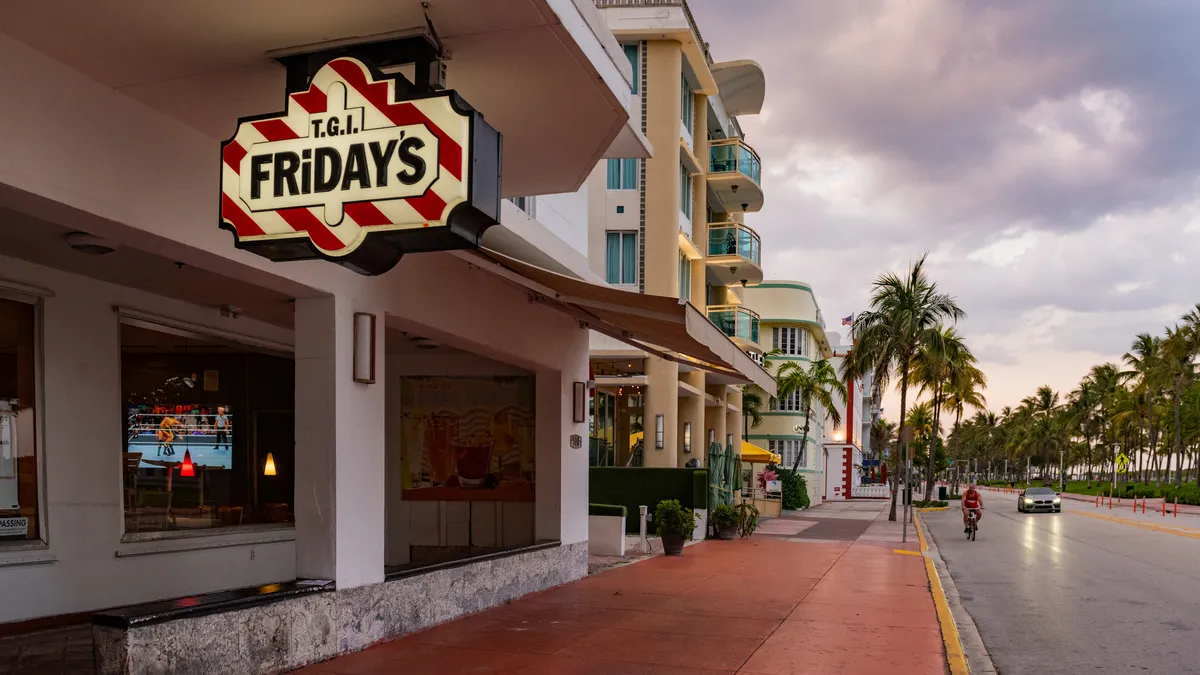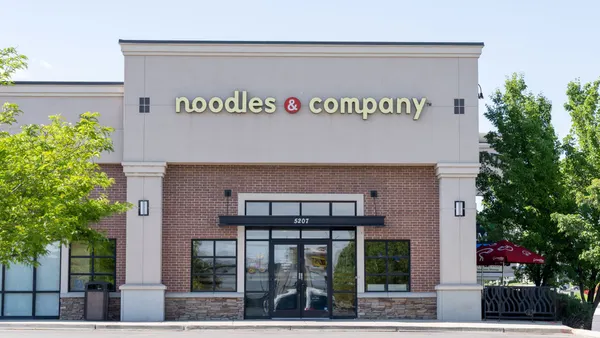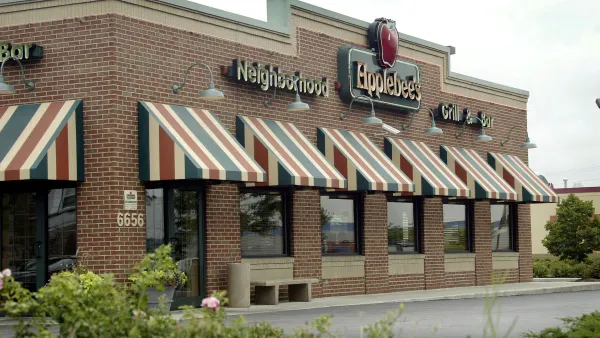Dive Brief:
- TGI Fridays filed for Chapter 11 bankruptcy protections in the North District of Texas on Saturday, according to a press release, citing the long impacts of COVID-19 and its capital structure.
- The filing followed weeks of unit closures, a bondholder coup against management and years of executive turmoil as the brand failed to gain sales momentum following the pandemic.
- Fridays is the latest casual dining chain to close large numbers of units or seek bankruptcy protections in 2024 as consumers have retreated from some types of discretionary spending.
Dive Insight:
In the year leading up to the bankruptcy filing, TGI Fridays’ sales fell by 15% due to unit closures and weaker average unit volumes, according to a court document filed by the chain’s Chief Restructuring Officer, Kyle Richter, who was appointed to his post Nov. 1.
The brand undertook a variety of measures to stem the sales slide, from its deployment of C3’s virtual brands to the launch of its Grilled and Sauced menu in 2023. The chain also looked at alternate real-estate strategies, with a particular focus on capital-light expansion at hotels.
The chain also launched “a new value menu comprised of 10 full meals starting at $9.99, a ‘happy hour’ program, direct mail offers, and new, compelling loyalty offers,” Richter said. Consumer price sentiment regarding the brand improved by 15 percentage points in the second quarter compared to the first quarter.
Still, as consumers became more price-sensitive, Fridays publicly traded competitors, like Chili’s, were able to draw on larger resources to alert consumers to value meals.
“[Fridays] had much more limited resources to market on a national scale and lost market share as a result,” Richter wrote.
In September, the company’s bondholders seized many of its assets, including restaurant royalties, after Fridays violated the terms of its bond covenant. That manager termination event put a stop to Fridays’ proposed $220 million merger with UK franchisee Hostmore, which would have included a shift to a fully franchised model.
As a result of the bondholders’ moves, Richter said, “[Fridays] lost a significant portion of its revenue stream as the Company would no longer receive the benefit of the restaurant royalty payments.”
Additionally, Fridays’ U.S. unit count fell steeply in recent years, from 329 at the end of 2020 to 161 at the time of the filing. Most of the closures this year have been company units. According to the chain’s franchise disclosure document, Fridays operated 140 of its U.S. restaurants at the start of the year. As of the filing, it operated just 39.
Consumers at many restaurants are unlikely to see any immediate changes, John Bringarderner, head of Debtwire, said in a statement emailed to Restaurant Dive.
“Because the securitized debt backing the franchisees is a special type of bankruptcy-remote financing, they will remain outside of the Chapter 11 and will continue to operate — customers shouldn’t notice any difference,” Bringardner wrote.
TGI Fridays Franchisor franchised the brand to 56 franchisees across 41 countries, according to a press release about its bankruptcy. The company has 122 franchised units in the U.S. and 316 globally, according to court documents.
With commercial landlords under pressure from lenders, restaurants looking to get out of stores with rising rental costs or falling sales may find Chapter 11 more appealing. At least one fast casual chain, Roti, found the end of its pandemic-era rent deferrals pushed it into bankruptcy. Brad Sandler, a partner at bankruptcy and restructuring firm Pachulski Stang Ziehl & Jones said the Chapter 11 process may be the safest way for rent-burdened companies to improve their situation.
“To the extent that there are a large number of unprofitable locations, really the only way to deal with them effectively and, frankly, efficiently is through a bankruptcy proceeding,” Sandler said. “In bankruptcy, a company can reject unprofitable leases.”
Fridays has asked a court to grant it the ability to reject 79 unexpired leases. If granted, the motion would save Fridays about $1.4 million a month, according to court records.
Bringardner said that for many legacy restaurant brands, bankruptcy may be an attractive way to streamline operations and emerge with a reduced, but more competitive, system. Fast casual challengers have taken market share from legacy brands, Bringardner said, leaving many in difficult circumstances.
“While Fridays and similar brands like Red Lobster and Hooters were household names, they now face an uphill battle as consumers shift towards newer, fast-casual options offering fresher experiences and often better value,” Bringardner wrote. “This trend reflects a wider reality in the industry where legacy brands may need to adapt or face a tough path forward in an evolving dining landscape.”














